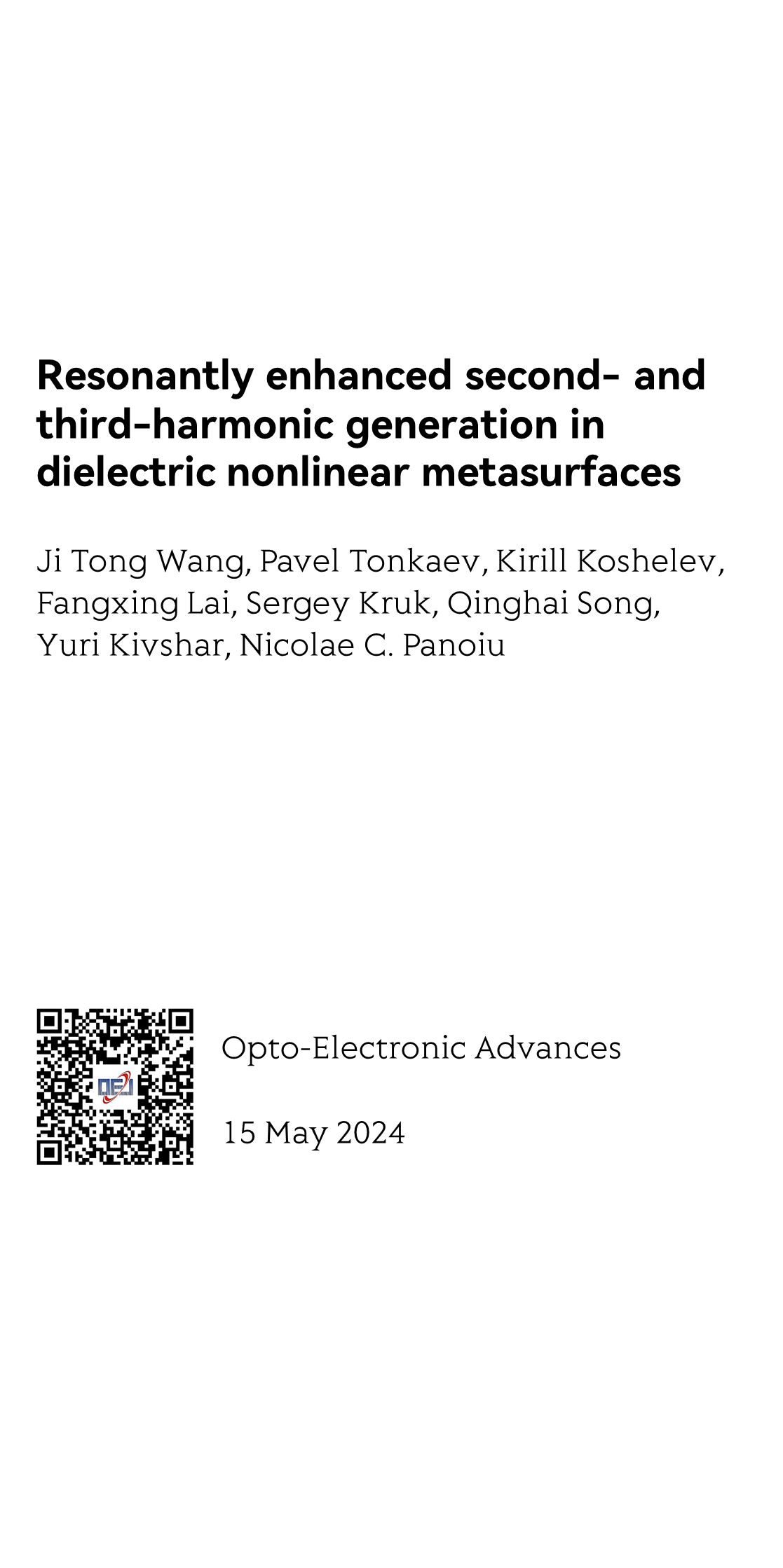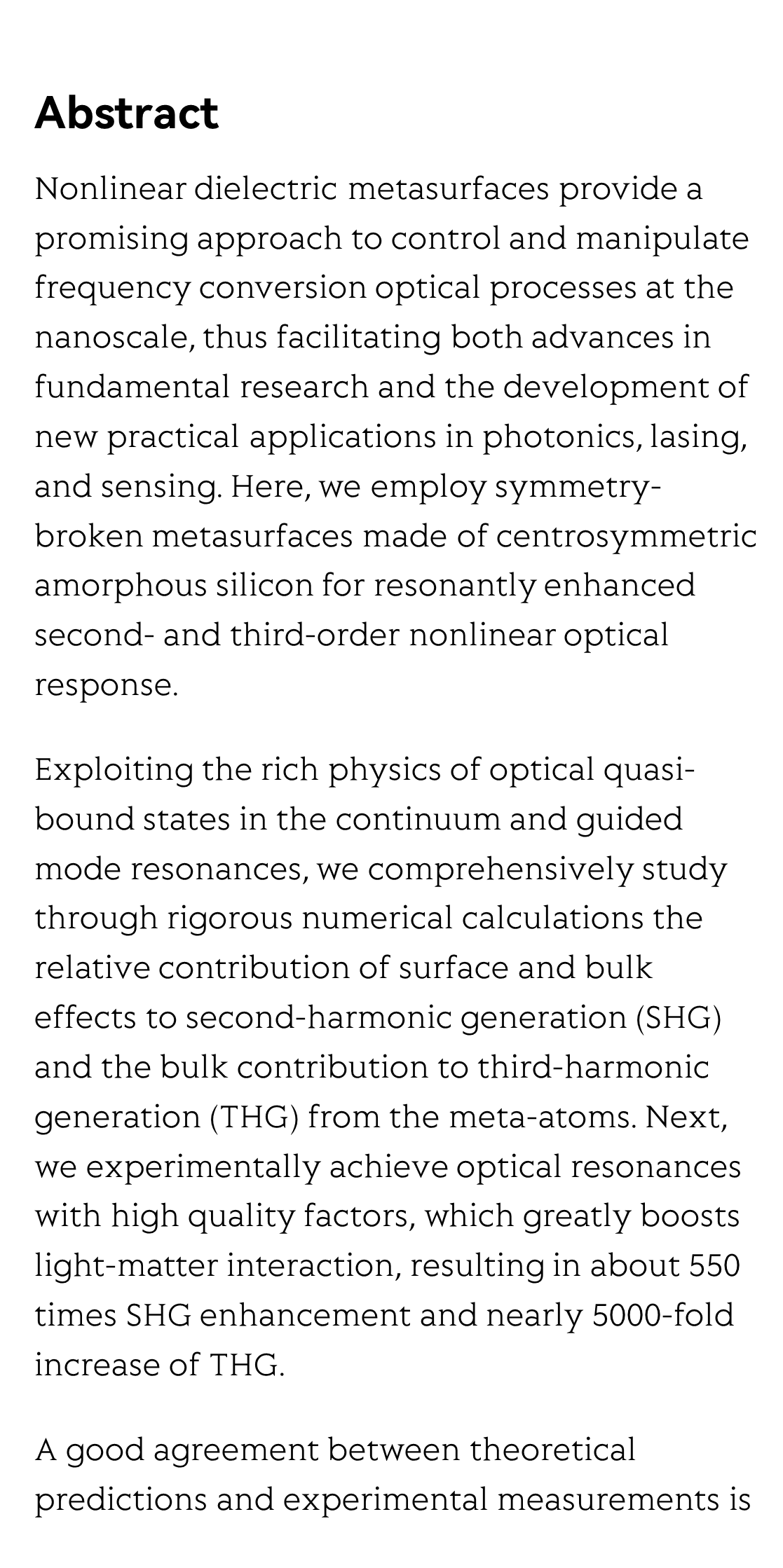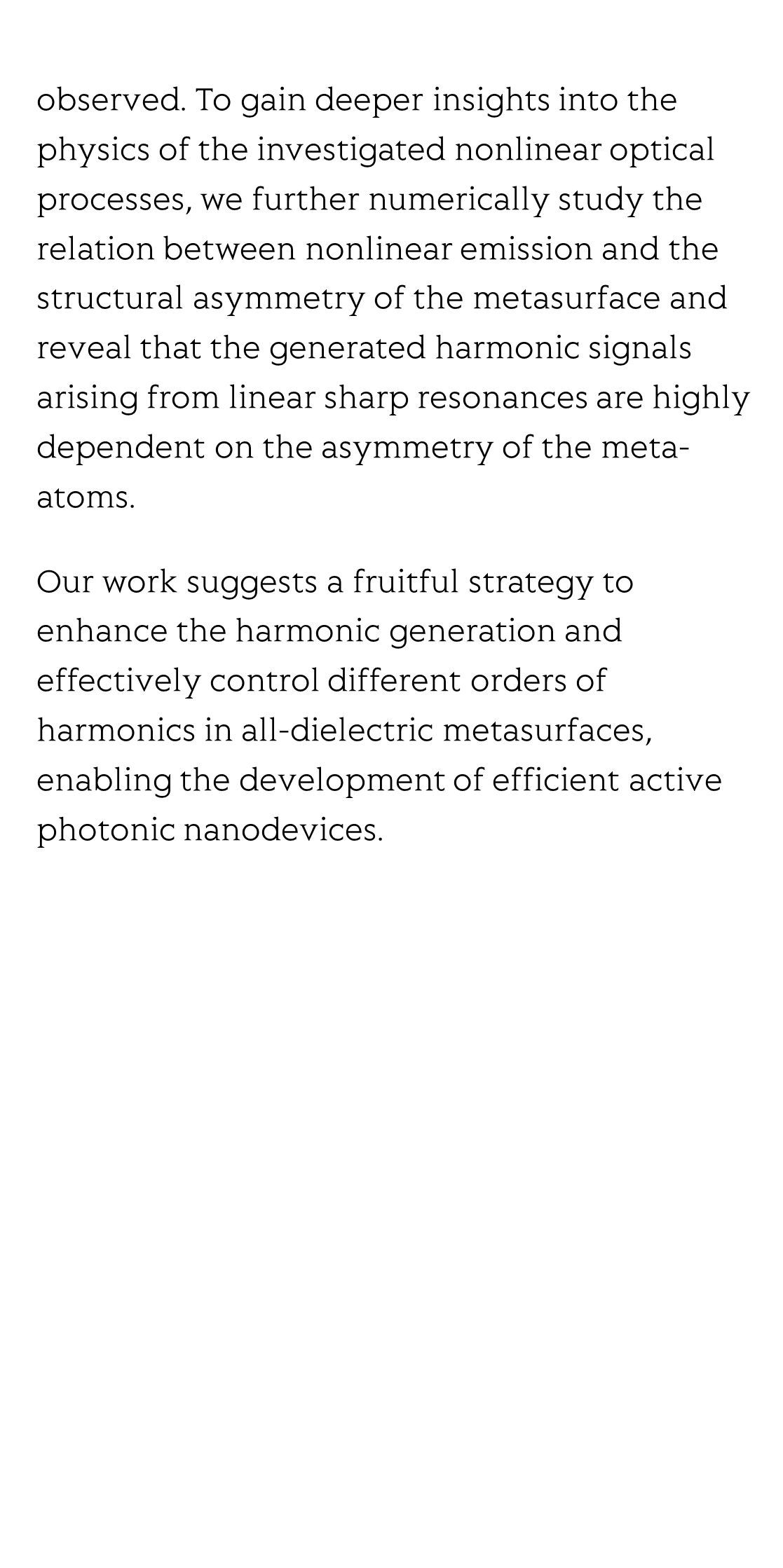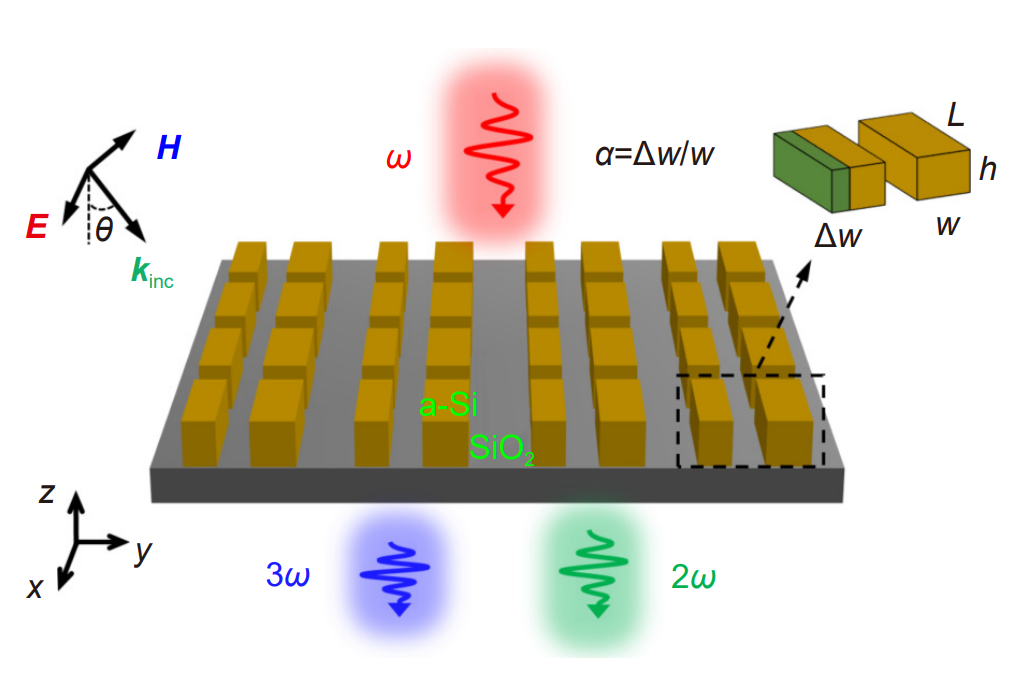(Peer-Reviewed) Resonantly enhanced second- and third-harmonic generation in dielectric nonlinear metasurfaces
Ji Tong Wang 王济彤 ¹, Pavel Tonkaev ², Kirill Koshelev ², Fangxing Lai 赖方兴 ³, Sergey Kruk ², Qinghai Song 宋清海 ³, Yuri Kivshar ², Nicolae C. Panoiu ¹ ⁴
¹ Department of Electronic and Electrical Engineering, University College London, London WC1E 7JE, United Kingdom
² Nonlinear Physics Center, Research School of Physics, Australian National University, Canberra ACT 2601, Australia
³ Ministry of Industry and Information Technology Key Lab of Micro-Nano Optoelectronic Information System, Guangdong Provincial Key Laboratory of Semiconductor Optoelectronic Materials and Intelligent Photonic Systems, Harbin Institute of Technology, Shenzhen 518055, China
中国 深圳 哈尔滨工业大学(深圳) 广东省半导体光电材料与智能光子系统重点实验室 微纳光电信息系统理论与技术工信部重点实验室
⁴ Wuzhen Laboratory, EGO Wuzhen Digital Economy Industrial Park, No. 925 Daole Road, Tongxiang City, China
中国 桐乡 EGO乌镇数字经济产业园 乌镇实验室
Opto-Electronic Advances, 2024-05-15
Abstract
Nonlinear dielectric metasurfaces provide a promising approach to control and manipulate frequency conversion optical processes at the nanoscale, thus facilitating both advances in fundamental research and the development of new practical applications in photonics, lasing, and sensing. Here, we employ symmetry-broken metasurfaces made of centrosymmetric amorphous silicon for resonantly enhanced second- and third-order nonlinear optical response.
Exploiting the rich physics of optical quasi-bound states in the continuum and guided mode resonances, we comprehensively study through rigorous numerical calculations the relative contribution of surface and bulk effects to second-harmonic generation (SHG) and the bulk contribution to third-harmonic generation (THG) from the meta-atoms. Next, we experimentally achieve optical resonances with high quality factors, which greatly boosts light-matter interaction, resulting in about 550 times SHG enhancement and nearly 5000-fold increase of THG.
A good agreement between theoretical predictions and experimental measurements is observed. To gain deeper insights into the physics of the investigated nonlinear optical processes, we further numerically study the relation between nonlinear emission and the structural asymmetry of the metasurface and reveal that the generated harmonic signals arising from linear sharp resonances are highly dependent on the asymmetry of the meta-atoms.
Our work suggests a fruitful strategy to enhance the harmonic generation and effectively control different orders of harmonics in all-dielectric metasurfaces, enabling the development of efficient active photonic nanodevices.
Flicker minimization in power-saving displays enabled by measurement of difference in flexoelectric coefficients and displacement-current in positive dielectric anisotropy liquid crystals
Junho Jung, HaYoung Jung, GyuRi Choi, HanByeol Park, Sun-Mi Park, Ki-Sun Kwon, Heui-Seok Jin, Dong-Jin Lee, Hoon Jeong, JeongKi Park, Byeong Koo Kim, Seung Hee Lee, MinSu Kim
Opto-Electronic Advances
2025-09-25
Dual-frequency angular-multiplexed fringe projection profilometry with deep learning: breaking hardware limits for ultra-high-speed 3D imaging
Wenwu Chen, Yifan Liu, Shijie Feng, Wei Yin, Jiaming Qian, Yixuan Li, Hang Zhang, Maciej Trusiak, Malgorzata Kujawinska, Qian Chen, Chao Zuo
Opto-Electronic Advances
2025-09-25







